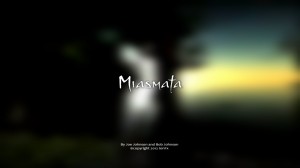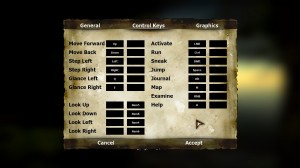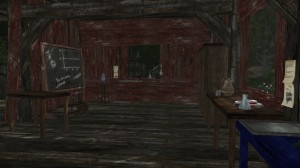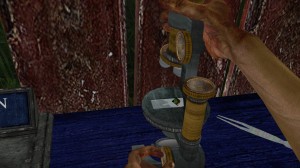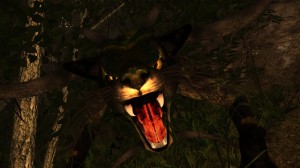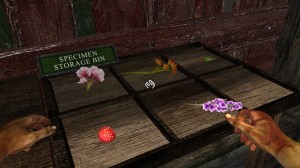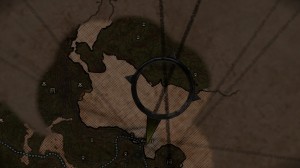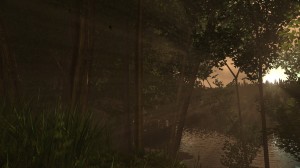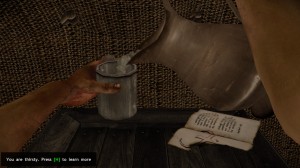Psychological horror games are a lot of fun to play, even if they have a habit of increasing the frequency of how often you need to wash your delicates. The adrenaline gets pumping and your imagination becomes your own worst enemy, sometimes to the point where you are afraid to pick it up and play it again. “Miasmata” draws some similarities to the way psychological horror games are structured, but sets itself apart with some pretty unique gameplay mechanics. Before the paranoia starts to set in, I’d like to quickly thank Bob Johnson for providing me with a free review copy.
The main menu is very straightforward. You’ll have three save slots in front of you, the option to adjust game settings, and the ability to quit. The options menu addresses things like sound, graphics, controls…and before you ask, yes, there is gamepad support (per the manual I linked later on), though I didn’t see the option to enable that feature specifically.
When you’re ready to play, you’ll be assuming control of Robert Hughes. Robert is a scientist that’s been infected by a plague. You arrive at an island to meet up with your fellow scientists with the intent on developing a cure, though you quickly learn that your colleagues haven’t fared well and it’s up to you to develop the cure on your own.
“So, you’re a scientist trying to find a cure to this disease…where’s the scary stuff you were talking about?” “Miasmata” isn’t as intense in terms of scares as say, “Slenderman-esque” games or “Amnesia”, but it combines an adventure and survival mechanic that really meshes well with the “you are being hunted” theme. There IS a creature hunting you, but you must also find a cure to the plague you’ve been infected with by exploring the island you’re on. Needless to say, you won’t be able to cure jack if your plan is to cower in the corner for hours on end.
The creature in question is not able to be killed, so don’t bother trying. It becomes more aggressive as the game goes on and you’ll know when it’s near because you’ll see animals fleeing the area and your heartbeat will intensify. Unlike Slenderman, you’ll be able to engage the creature in combat, though doing so is usually a dangerous avenue to explore. I found it better to hide in the environment and hope that the creature is too busy trying to figure out the plot synopsis for LOST to actively hunt me.
Gathering and research is a big part of the game, as the cure is derived from plants and fungi that are scattered around the island. You’ll be able to carry up to three specimens at a time and use these specimens at two different stations: the research station and the synthesis station. The former serves to identify a particular specimen while the latter allows you to combine them to create medicines. There is a storage bin of sorts available that allows you to store up to six specimens, and its contents persist from station to station. This mechanic is similar to that of the storage bins found in the early Resident Evil games.
Getting around the environment will require a little work, unless you have a photographic memory. To assist you in getting around, you’ll have a map and compass, though you’ll need to actively find ways to add landmarks to your map by using triangulation and other mapping techniques. Throughout your travels, you may find notes that contain maps already, which are then automatically added to your map. I both like and dislike the cartography mechanic. While it makes the game it bit more realistic, it’s very easy to get turned around and lost. While the map hi-lites a blue dotted path for you, the environment will sometimes offer multiple ways to proceed and they look the same at times. I was forced to check my compass often when I didn’t have landmarks to triangulate my position and hope I was headed in the right direction.
The environment itself is beautiful and I thoroughly enjoyed exploring it. Luckily, there are no spiders or snakes waiting to ruin your day, though you’ll have to keep an eye out for freshwater lakes to keep yourself alive. Yes, you can die from fever and dehydration in this game, so watching out for the creature isn’t your only priority. The game takes it a step further and hits you with a day and night cycle, along with a sleep mechanic that you’ll need to make use of in order to regain your strength. If you do travel at night, you’ll have a trusty lighter and torches (if you’ve found or crafted them) to help you get to where you’re going.
I did take issue with the interface and lag, though it could simply be my laptop. For the record, I have an Asus G73S Intel Core i7, 2 GHz with 8 gigs of memory and an NVIDIA GTX 460 M with 4 gigs of memory (phew)…it runs Borderlands 2 and Dead Island fairly well. The character responds to my commands as if drunk and it can be frustating to get him to move around the environment the way I want him to. The interface locks up at times, like when I attempt to put my map or journal away. Normally, you’d hit “M” to bring up your map and “M” again to put it away, but I have to mouse click after the second “M” to get the game to respond. I’m not an expert by any means when it comes to programming, but if it’s within the game’s engine to make things a bit smoother and more responsive, I’d be a happy camper.
Overall, “Miasmata” is a breath of fresh air, combining both an exploration and adventure element with that of survival, be it from a deadly creature or natural causes. The replay value is iffy, especially since the world itself is the same from one game to the next. I could live with that if the flora and fungi had randomized attributes at the start of every game, but they don’t. Once you’ve beaten the game (which takes twelve hours on average), you may find yourself coming back anyway just to explore areas that you may have missed. Those who enjoy exploration games like “Dear Esther” but wished for more content and gameplay mechanics would do well to invest in “Miasmata.” $14.99 is a fair price to pay for twelve hours (or more) of content, especially since other games that shall remain nameless feature a three to five-hour single player campaign and ask for a full fifty/sixty bucks. I enjoyed my time with “Miasmata” and foresee me playing it for a good while after this review posts.
Final Verdict: 7/10
—
You can find more information on “Miasmata” by visiting the official site, here:
http://www.ionfx.com/product_pc_Miasmata.php
You can purchase the game and view the manual on Steam, here:
http://store.steampowered.com/app/223510/
http://cdn.steampowered.com/Manuals/223510/MiasmataManual.pdf?t=1354147698
You can view video play sessions here:
http://www.youtube.com/watch?v=us_Rb2nXM4Q

